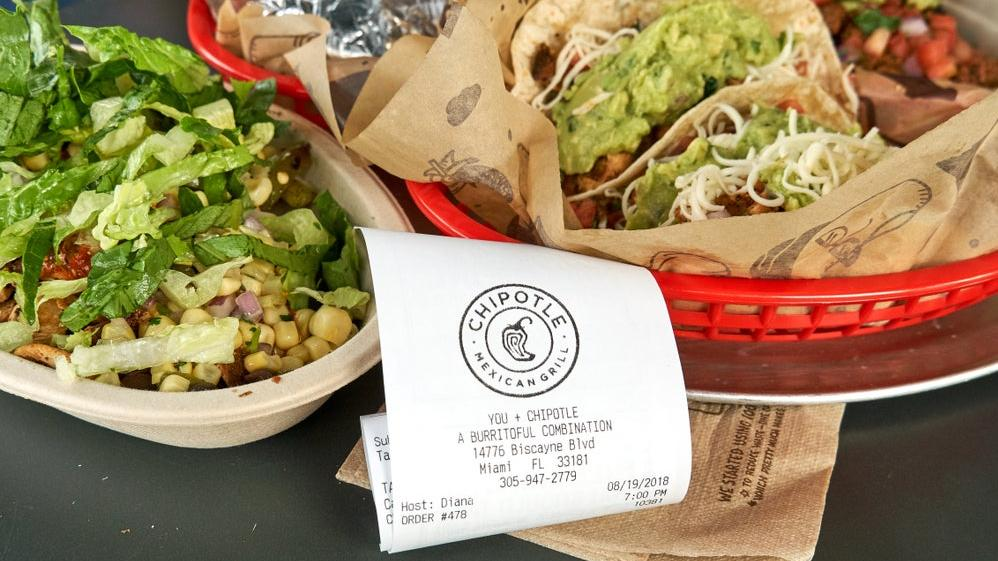Why Guacamole Always Costs Extra
Digging through delicious green mash for the answer to an age-old question.
We may receive a commission on purchases made from links.
It's well-established by now that adding guacamole to your burrito is (usually) going to cost you extra. There are even T-shirts referencing this immutable fact of life. But every time I go to add guac to my bowl, I ask myself the same question: Why is guacamole always fenced off this way, adding a significant cost to the meal whereas extra peppers, onions, or jalapeños simply don't?
Which restaurants charge extra for guacamole?
A brief scan of fast food and quick-service menus demonstrates the powerful pull of guacamole. At Chipotle, for example, adding guac to a burrito in my local market costs an extra $2.65. Chipotle is oft-referenced in this arena, but it's certainly not alone in its pricing structure.
Moe's Southwest Grill tags menu items that include guacamole, charging $2.49 to add guacamole to the items that don't. Similarly, Del Taco, Baja Fresh, and Chuy's include guac on some dishes and charges extra on others—$0.85 for two scoops or $1.10 for three. Heroic Qdoba makes a big deal about not charging extra for your first portion of guacamole and queso on build-your-own entrees. Extra portions are subject to additional charges.
Guacamole is usually made in house
One reason restaurants upcharge for guacamole is that it's made in-house. Chipotle's guacamole-making process was put on display in a viral TikTok video last year, which underscored the fact that it is indeed made from scratch. The chain reportedly dedicates two to three employees to guacamole making; though it might seem hard to believe that multiple workers are solely on guac duty all day long, the restaurant says that an average Chipotle location produces about 70 lbs. of the green stuff per day.
Still, if Chipotle goes through so much guacamole, that must mean customers are fiends for it—so why not build its cost into the total price of each menu item?
Avocado prices fluctuate wildly
Unlike many other types of produce, the price of avocado can swing wildly depending on demand, availability, crop conditions, tariffs, and even political turmoil.
"Growing, distributing, and preparing the ingredients for guacamole comes at a high cost," writes Dani Walpole in Reader's Digest. "The avocado fruit is expensive to grow, and since it's only grown at certain times of the year in a few regions of the world, it's a precious commodity to consumers."
Josh Breitner, general manager of The People's Pint in Greenfield, Massachusetts, told NBC News that he took avocado off his restaurant's menu altogether in 2018 because the price would fluctuate from $35 a case to $80 a case—a huge difference, given the thin margins of most restaurants.
Given those market conditions, it makes sense to add a surcharge for guacamole, offsetting market fluctuations in order to still make a profit on menu items that include it. Even that isn't always enough, however. In the same NBC News report, Leo Kremer, co-owner of the Dos Toros chain in New York and New Jersey, said that even with the upcharge, depending on the price of avocados at any given time, guacamole was a losing proposition for the restaurant.
"When it was $90 a crate, we estimated that we were losing money every time someone added guacamole to their burrito," Kremer told NBC News, noting that at the time, guacamole was $1.25 to add. "Avocado is a huge percentage, roughly 10 percent of sales volume, but it's a higher percentage of cost for us because we try to subsidize guacamole for our guests."
For what it's worth, avocado prices are expected to stay relatively low as we move further into 2023 (following a surplus in 2022 that led to Philadelphia giving away millilons of avocados for free). But keeping a surcharge in place acts as insurance for restaurants to keep offering guacamole, regardless of market conditions.
Guacamole isn’t for everyone
It might be hard for diehard fans to believe, but some people are avocado- and guacamole-averse. Statistics on this are iffy, but one study found that only 57% to 66% of adults like avocados.
It would stand to reason that if guac were included with every order, you'd have to make enough for everyone to eat it, and not every customer would. As we all know, avocados are a fleeting food—they ripen quickly, and once you open them up, they only have between minutes and hours before they go brown. This is perhaps why Chili's, only provides guacamole with its fajitas upon request, even though it doesn't charge extra for it.
We’ve simply grown used to the guacamole upcharge
Although there do seem to be some legit reasons for restaurants to charge extra for avocados and guacamole, I do wonder if, at this point, we're simply inured to this fee; we expect it, and therefore we accept it. Guacamole is such a prized substance that Chipotle's new rewards program, Freepotle (which sounds like a rallying cry to set the restaurant free), is framed around the promise of free guac "dropping" into your account at random times of the year.
Whatever the reason, and however steep the upcharge, I have to admit I love the stuff. It's green, goopy, and delectable. It gives my burrito bowl a pop of color and a burst of freshness like nothing else can. So here's my $2.65, Chipotle. Please pile it on.
